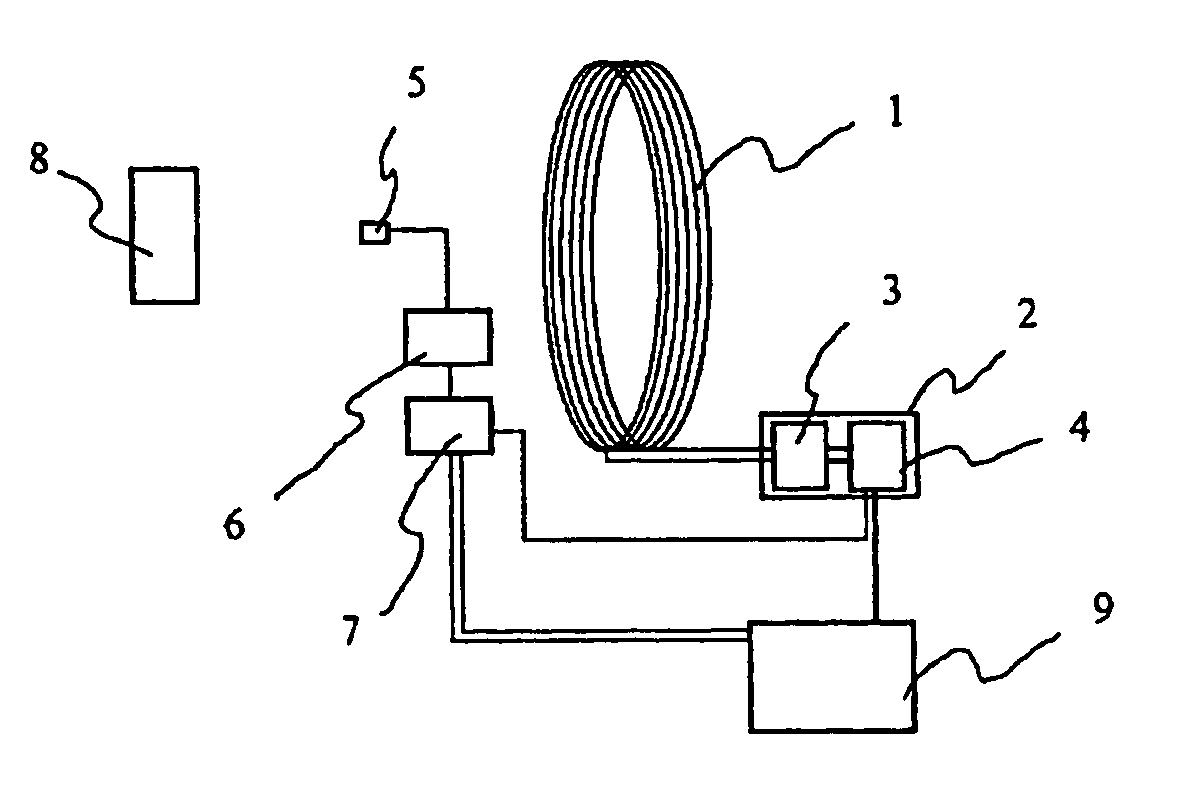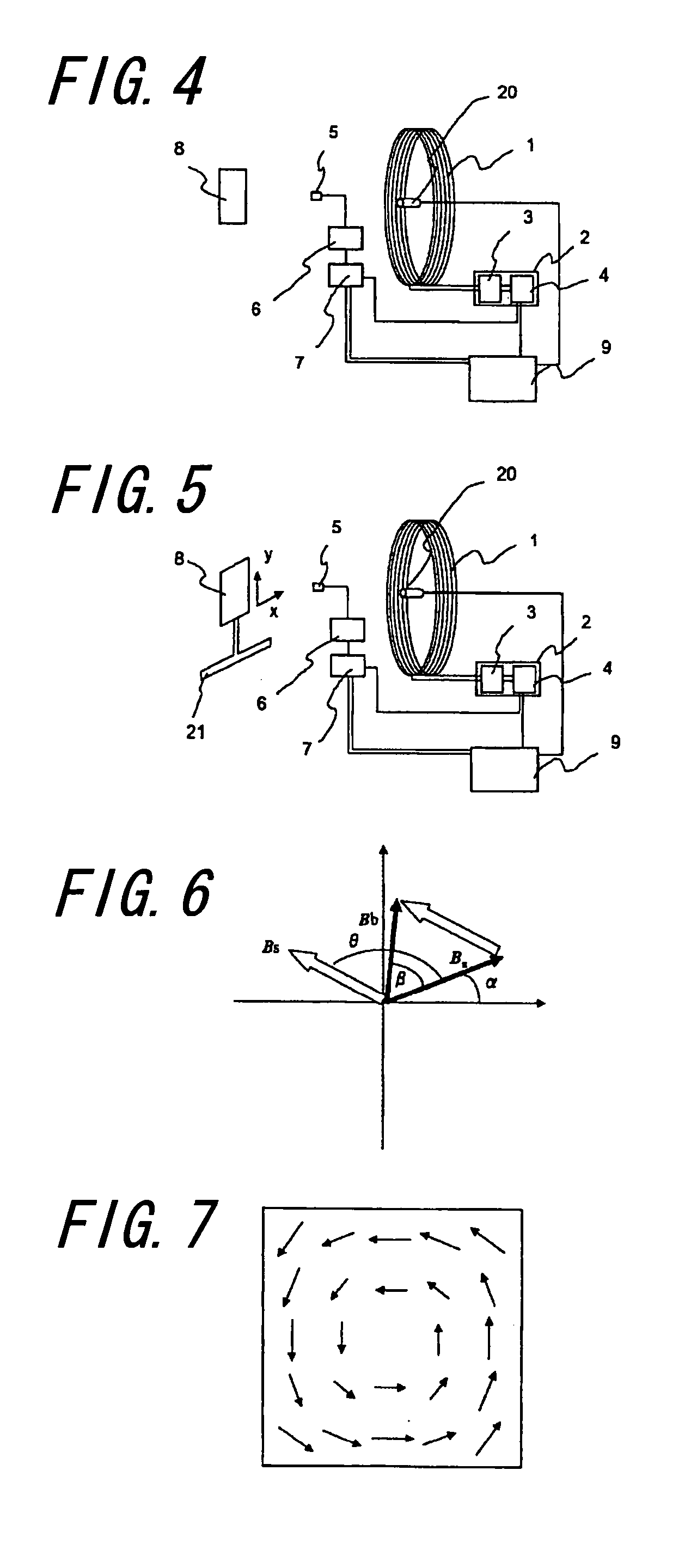Device for measuring magnetic impedance
a technology of magnetic impedance and device, which is applied in the direction of magnetic property measurement, material magnetic variables, instruments, etc., can solve the problems of affecting the inability to measure the phase change due to the influence of the applied magnetic field or the local impedance characteristics of the magnetic field generated from the test object, and the problem of affecting the distribution of the applied magnetic field, so as to achieve the effect of improving accuracy, simple configuration and accurate measuremen
- Summary
- Abstract
- Description
- Claims
- Application Information
AI Technical Summary
Benefits of technology
Problems solved by technology
Method used
Image
Examples
embodiment 1
[0139]FIG. 1 is a schematic diagram showing a basic configuration of a magnetic impedance measurement device according to the present invention. A magnetic field is applied to the test object 8 by means of an apply coil 8. A power source 2 for the apply coil is adapted to change the frequency of the applied magnetic field by means of an oscillator 4. A current source 3 is driven with this signal to apply an alternate current to the apply coil 1. An induced current is generated in the test object 8 by the applied magnetic field and the induced current in turn generates another magnetic field. This magnetic field generated from the induced current is detected with a pair of magnetic sensor means 5 comprising magnetoresistive sensors. Here the coil face of the apply coil will be defined as the xy plane, while the central axis of the coil will be defined as the z axis. The one pair of magnetic sensor means 5 is provided, as shown in FIG. 2, with a magnetic sensor 10 for Bx and a magneti...
embodiment 2
[0142]FIG. 4 is a schematic diagram showing a basic configuration of the magnetic impedance measurement device according to a second embodiment of the present invention. In embodiment 2, there is provided a distance measurement means 20 for the purpose of determining the positions of the test object 8 and the apply coil 1. The distance measurement means 20 may be placed anywhere, either in proximity to the apply coil 1 or in proximity to the one pair of the magnetic sensor means 5, as long as the relative distances of the distance measurement means 8 with respect to the apply coil 1 and the pair of the magnetic sensor means 5 is known. Here a distance meter with the use of a laser beam is used as the distance measurement means. The magnetic response characteristic of the test object 8 with respect to the applied magnetic field varies depending on the distance from the apply coil 1, and also the intensity of the signal varies substantially depending on the distance from the pair of m...
embodiment 3
[0143]FIG. 5 is a schematic diagram showing a basic configuration of the magnetic impedance measurement device according to embodiment 3 of the present invention. Here the device according to embodiment 2 is provided with a scanning means 21 for the test object and the distance between the pair of the magnetic sensor means and the test object can be held constant by means of a distance measurement means and measurement can be made on the test object with a scanning movement. With this mechanism, the distribution of a magnetic field generated from an induced current of the test object can be measured by means. Further, it is possible to analyze the distribution of the induced current from the distribution of the magnetic field.
[0144]FIG. 6 is a pattern diagram of a basic processing method for an output from the magnetic sensor having been subjected to a lock-in phase detection. An output from the magnetic sensor in the absence of the test object is defined as Ba. Because of an induct...
PUM
 Login to View More
Login to View More Abstract
Description
Claims
Application Information
 Login to View More
Login to View More - R&D
- Intellectual Property
- Life Sciences
- Materials
- Tech Scout
- Unparalleled Data Quality
- Higher Quality Content
- 60% Fewer Hallucinations
Browse by: Latest US Patents, China's latest patents, Technical Efficacy Thesaurus, Application Domain, Technology Topic, Popular Technical Reports.
© 2025 PatSnap. All rights reserved.Legal|Privacy policy|Modern Slavery Act Transparency Statement|Sitemap|About US| Contact US: help@patsnap.com



